What is Lactoferrin and How Does it Help Anemia and Iron Regulation?
Lactoferrin is an iron binding, iron modulating protein found in milk, and in the last 30 years researchers are still learning about the unbelievable healing qualities of this protein. With each new study excitement mounts as evidence suggests lactoferrin is even more powerful than previously thought. Lactoferrin is proving to be a better and safer alternative to treating anemia, as well as it’s central role in the immune system.
About Lactoferrin
The greatest concentrations of lactoferrin are found in human milk with bovine milk coming in at a close second. Lactoferrin is also found in saliva, mucus and tears. It has shown to have antimicrobial properties protecting us from viruses, bacteria, parasites and fungi. Doctors often talk about your “T” zone to reduce the risk of getting sick during cold and flu season – which consists of your eyes, nose and mouth. To avoid giving yourself a cold or flu virus you should keep hands away from these areas, and by no coincidence this is where a good concentration of lactoferrin resides – in the tears, mucus and saliva. This is the body’s first defense against foreign invaders. (source)
According to a study done by The University of Texas Health Science Center, they state that “…data presented here lay emphasis on the significance of lactoferrin in the resolution or progression of the immune responses, thus giving lactoferrin bookend properties in controlling the initial reactions to infectious assault, trauma, and injury.”
How Does Lactoferrin Protect Us?
The protective actions of lactoferrin are many and include:
●inhibiting the survival or growth of many different organisms
●activation or stimulation of a variety of immune system cells
●regulation of normal cell growth
●inhibiting abnormal tumor growth and spread of cancer cells
Iron is essential for bacteria to grow, and lactoferrin sequesters iron from these harmful organisms, leaving them unable to survive. Lactoferrin can also attach directly to the bacteria preventing them from binding to our healthy cells.
Interestingly, friendly bacteria like those found in the gastrointestinal tract (e.g. Lactobacillus acidophilus, Lactobacillus bifidus and Lactobacillus G.G.) may be resistant to such effects because they are less dependent on outside sources of iron.
Lactoferrin Treats Anemia and Iron Deficiencies
When you don’t have enough red blood cells to carry oxygen to your tissues, you have anemia. Potential causes may include iron or B vitamin deficiency, chronic diseases that interfere with red blood cell production, blood or bone cancers and other conditions.
A study published in 2010 examined the effects of bovine lactoferrin versus an iron supplement (ferrous sulfate) in a group of pregnant women with anemia. The lactoferrin significantly increased the number of red blood cells, hemoglobin, total serum iron and serum ferritin after only 30 days of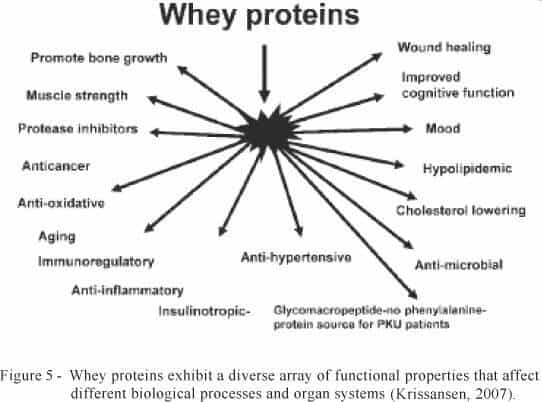 treatment.
treatment.
Also, the group receiving the iron reported significantly greater rates of abdominal pain and constipation. The study concluded that supplementing with lactoferrin is a more effective and safer alternative than iron, without any of the gastrointestinal side effects. (source)
Lactoferrin and Whey Protein
Many individuals looking to boost their immune systems and/or treat anemia will be happy to know that the highest quality and quantities of lactoferrin are found in cow’s milk, and even more so in a whey protein concentrate (WPC). Lactoferrin treats anemia and iron deficiencies by regulating iron production in the body. Our Vital Whey is made with our Proserum® grass fed whey protein and contains 800 mg of lactoferrin per 20g serving. If you are someone who is taking or thinking of taking an isolated form of lactoferrin in a capsule, here are three reasons that might make you reconsider:
1. Isolating lactoferrin in pill form means more processing, and usually a lower quality product.
2. A WPC contains 3x’s the amount of naturally occurring lactoferrin vs. the leading brand of capsules.
3. Lastly, a high quality WPC like our Proserum® is also a great source of protein, immunoglobulins, and the amino acids necessary for Glutathione production (the body’s “Master Antioxidant”).
References http://www.livestrong.com/article/540584-lactoferrin-anemia/ http://www.ncbi.nlm.nih.gov/pubmed/17507874
- Best Fitness Supplements: Glutamine and Colostrum Uses and Benefits - December 19, 2019
- Cooking with Protein Powder - November 22, 2019
- Is There A Point To Taking Whey Protein After Cardio? - September 16, 2019

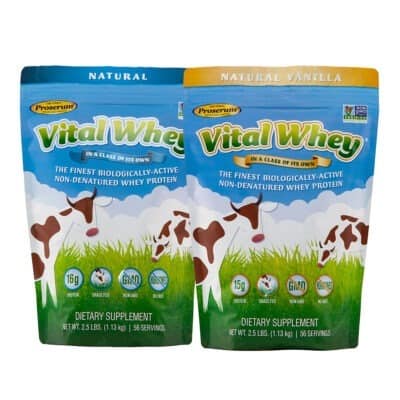
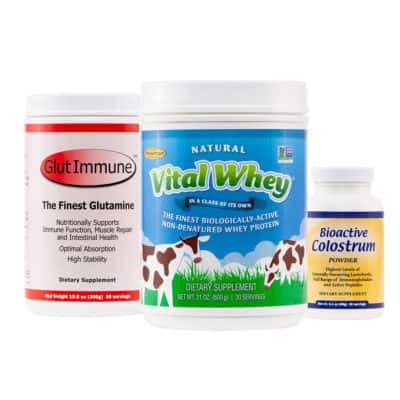
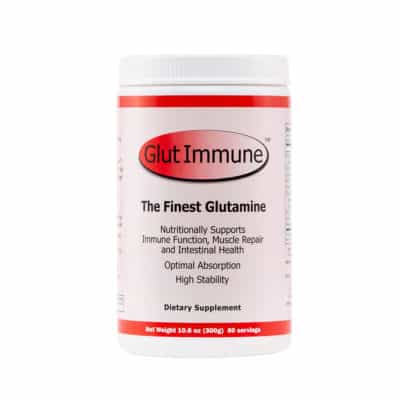
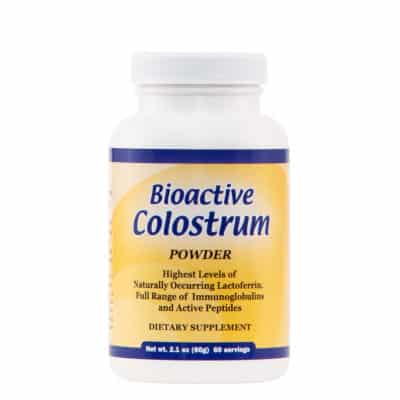
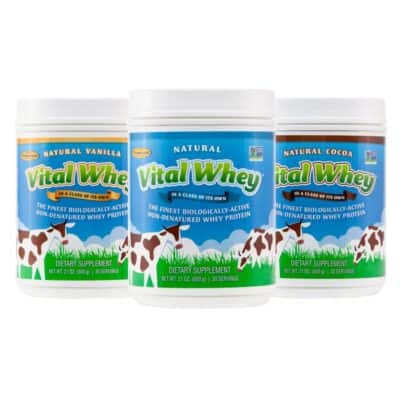
The 2010 study mentioned above used “iron saturated bovine lactoferrin” and not the one found in the whey protein.
I noticed this too…cannot just extend effects from study to another product. However, I’ve read paper and how they made the iron-saturated lactoferrin (30%), and since native bovine whey has 15-20% iron saturation, it could be expected to have a smaller yet similar effect.